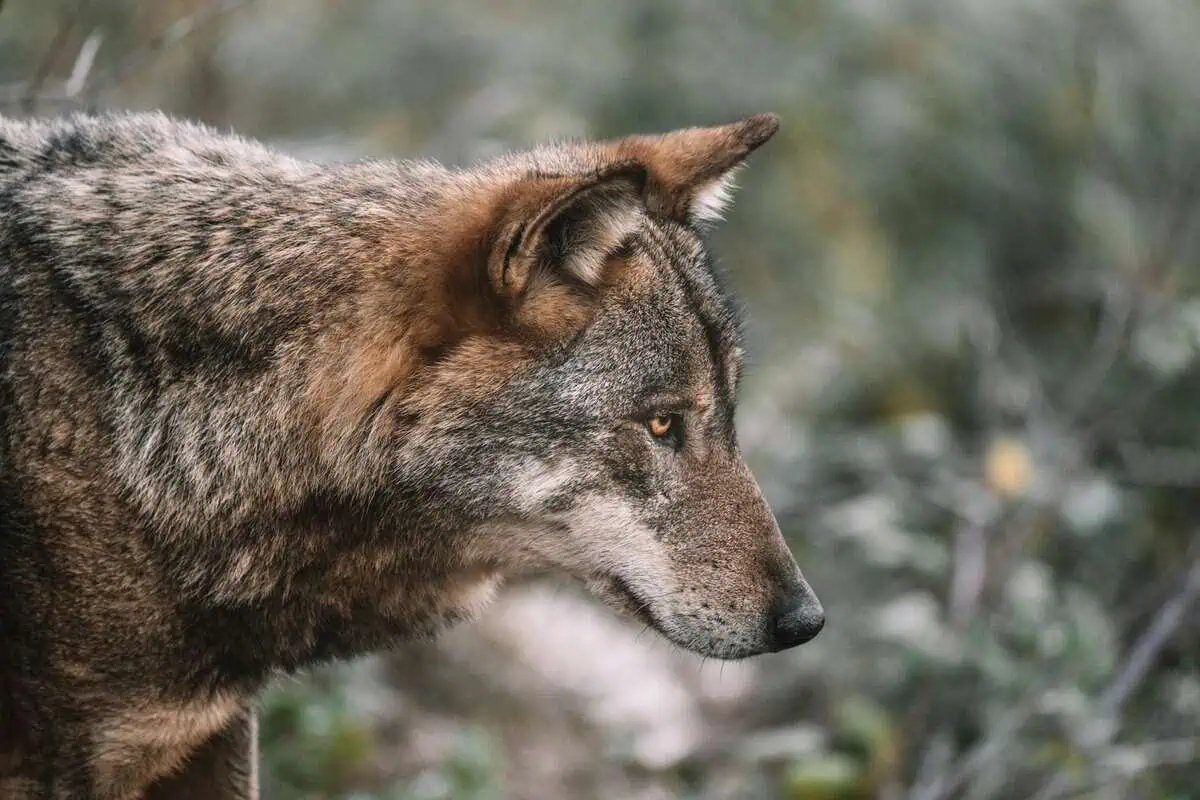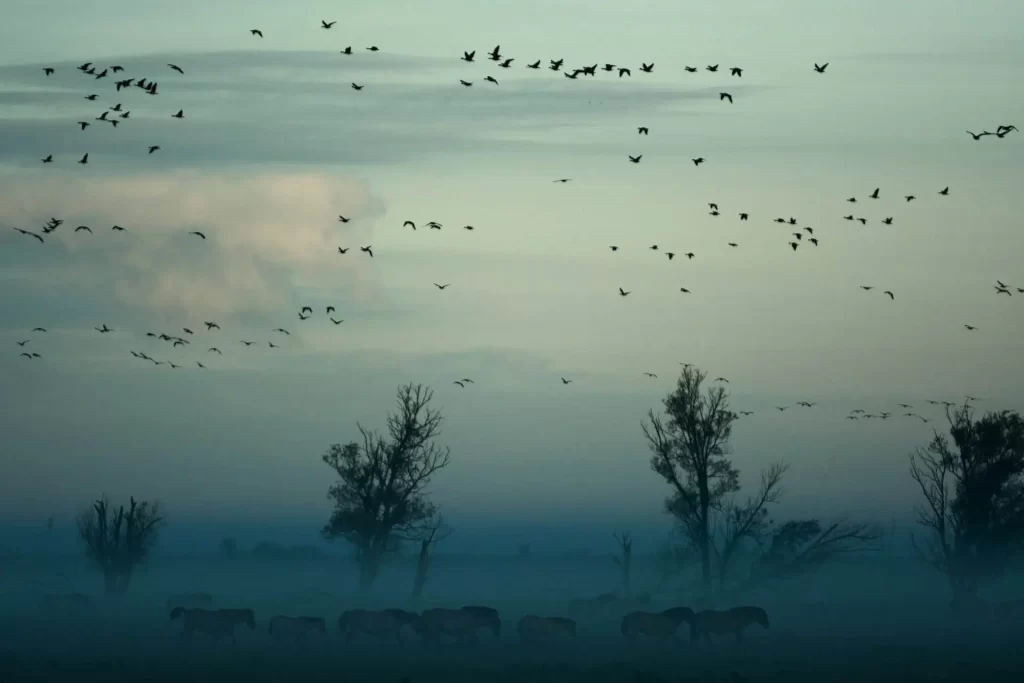Share:
Wolves return—without attacking livestock

Why Europe’s returning wolves may not be the livestock predators they’re made out to be.
Rewilding Meets Reality
As wolves return to landscapes long emptied of large predators, tension often follows. Farmers worry about their herds. Conservationists worry about coexistence. And both sides search for facts amid fear and folklore.
Now, a groundbreaking study in Poland’s Warta River Mouth National Park sheds new light on what wolves really eat—and the results may surprise you.
Despite free-ranging livestock grazing unprotected across the wetlands, wolves in this region overwhelmingly preferred wild prey. In fact, over 80% of their diet consisted of wild ungulates like roe deer and wild boar. Livestock, including cattle and dogs, made up only 3.4% of the biomass consumed.
This new evidence challenges the assumption that wolves inevitably turn to easy livestock targets when available—and could shape how Europe manages wolf-livestock conflict in a rewilding era.
The Setting: A Mosaic of Wetlands and Wildlife
Stretching across 500 square kilometers of western Poland, the Warta River Mouth (WRM) is a tapestry of humid grasslands, farm fields, floodplains, and patches of pine forest. The heart of this landscape—the Warta Mouth National Park—is a haven for waterfowl and part of the Natura 2000 network and the Ramsar Convention.
But the park is also home to something larger, wilder, and far more controversial: the grey wolf (Canis lupus).
In summer months, some 4,000 cattle and 700 horses roam freely here with no fencing, herding, or protection measures. It’s the kind of scene that would seem tailor-made for conflict—except the data tell a different story.
Tracking the Top Predator
From 2020 to 2022, a team of Polish researchers led by Dr. Robert Mysłajek of the University of Warsaw deployed a mix of genetic fingerprinting, camera trapping, and field tracking to monitor the region’s wolves.
They identified two distinct wolf family groups living within the WRM. Over two years, they collected and analyzed 109 scats (droppings) to determine the wolves’ diet, comparing their findings with seven other regions in Central Europe.
Their results were clear: even in a landscape filled with livestock, wolves mostly ignored domestic animals, focusing instead on natural prey.
What’s on the Menu?
The roe deer led the list, making up nearly 60% of the food biomass. Wild boar followed at 20.5%, despite recent culls due to African Swine Fever. Wolves also consumed medium-sized mammals like European beavers and hares, which accounted for 14.5% of the diet.
Cattle made up just 3%, and dogs only 0.4%—figures so low they raise an important question: Why aren’t wolves eating livestock when it seems so easy?
Nature’s Nuance: More Than Availability
The study’s authors suggest several reasons why wolves may avoid livestock, even when it’s abundant and unprotected:
1. Behavioral Traits of Livestock:
Breeds such as Limousin, Hereford, and Red Angus—common in WRM—are muscular and often horned. These traits may deter wolves, especially compared to smaller, dehorned dairy breeds more common elsewhere.
2. Natural Herding Instincts:
Cattle and horses in WRM graze semi-wild and form defensive herds, mimicking behavior of wild ungulates. This natural grouping may confuse or challenge predators.
3. Dead Calves Left in the Field:
With limited human supervision, stillbirths and early calf deaths (up to 2.3% in some breeds) may result in carrion left unattended. Wolves may scavenge rather than hunt.
4. High Wild Prey Abundance:
The WRM region has dense populations of roe deer and wild boar, meaning wolves don’t need to risk attacking livestock.
Conflict—Or Coexistence?
Only three cattle calves were confirmed as wolf food during the two-year study, and even those cases may involve scavenging. No predation on horses was recorded. Despite the presence of domestic dogs in wolf scat, no formal complaints were filed, suggesting the dogs were strays or free-ranging.
These findings suggest that the wolf-livestock conflict in WRM is more perception than reality. In fact, wolves may be delivering unrecognized ecosystem services, such as reducing populations of free-ranging dogs that harm wildlife, or scavenging disease-carrying carcasses that would otherwise linger in the landscape.
Rewilding Implications: A Case for Caution and Context
As wolves recolonize parts of Europe—from the Netherlands to Denmark to Belgium—the WRM study provides a valuable case study. It shows that:
- Wolves do not automatically target livestock, even when it’s abundant and unprotected
- Ecological context matters—from prey availability to livestock breed and behavior
- Management decisions must be based on local data, not assumptions or general fears
This doesn’t mean wolves never attack livestock. But it does mean lethal control or fear-driven policies may be unjustified—and potentially harmful to long-term conservation goals.
A Model for Future Coexistence?
The WRM wolves may be doing more than surviving—they may be showing us how rewilding and agriculture can coexist, even in crowded European landscapes.
Their diet is diverse, their presence stable, and their conflicts minimal. If supported with adaptive management, continued research, and public education, this model could help rebuild trust between people and predators.
In an age when ecological recovery is as much about social acceptance as biological success, the WRM wolves remind us that nature can adapt—if we let it.






